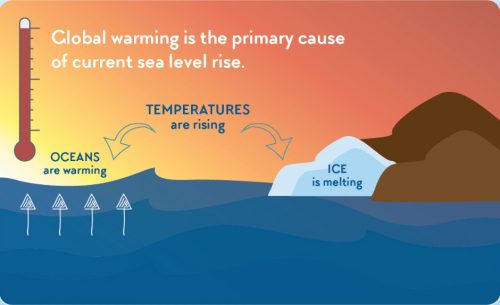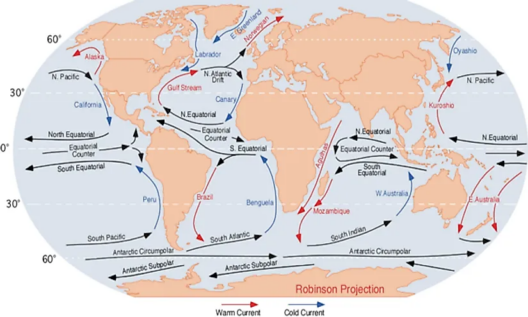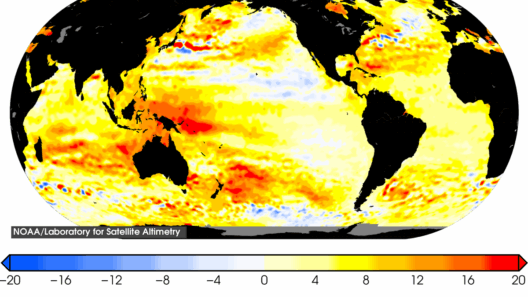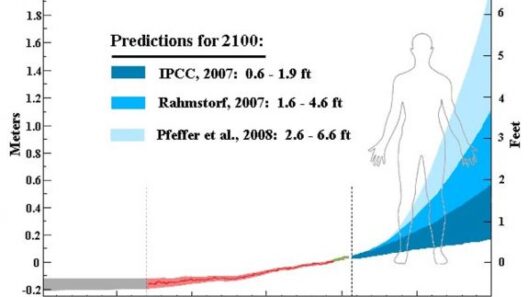In recent years the phrase “sea level rise” has entered the lexicon of environmental discourse, almost with the fervor of a popular meme. One might casually wonder: “Is it real or just another environmental alarmism?” This playful inquiry invites deeper exploration into the realities of sea level fluctuations. What does the evidence suggest? Are the oceans truly encroaching upon our shorelines, or is this merely a figment of exaggerated media narratives? By plunging into the complexities of this phenomenon, we can unveil the truth behind sea level changes, gleaning insights that are pivotal for both policy-making and public awareness.
The Scientific Underpinnings of Sea Level Rise
To understand whether sea levels are genuinely rising, one must first delve into the scientific imperatives that govern oceanic behavior. Sea level rise is primarily attributed to two mechanisms: thermal expansion and cryospheric melting. As global temperatures ascend due to anthropogenic climate change, ocean waters absorb heat and expand. This thermal expansion contributes significantly to observed increases in sea levels.
Moreover, the melting of glaciers and polar ice caps exacerbates this phenomenon. The Greenland and Antarctic ice sheets are disintegrating at alarming rates. Satellite measurements reveal the stark reality: these immense reservoirs of ice are contributing billions of tons of water to the oceans every year. To encapsulate this in a vivid metaphor, we are witnesses to Earth’s melting “ice sculptures,” where each dripping droplet signifies a complex interplay between climate, geology, and human activity.
The Variability of Regional Sea Level Changes
Contrary to a monolithic narrative, sea level change is neither uniform nor consistent across the globe. In some areas, notably along the U.S. East Coast, sea levels are rising faster than the global average, a phenomenon attributed to factors such as land subsidence and ocean currents. Conversely, certain regions may experience negligible changes or even declines in local sea levels. This interplay of localized phenomena leads to a perplexing reality: while global averages trend upward, individual experiences may diverge significantly from that narrative.
Such variability underscores the importance of localized studies. Coastal communities must take heed of the specific conditions affecting their shorelines, rather than relying solely on generalized data. The understanding that sea level rise is not a universal experience poses an intriguing challenge for urban planners and policymakers—how does one prepare for an uncertain future?
The Role of Climate Models in Predicting Sea Level Futures
Predictive climate models serve as invaluable tools in estimating the future trajectory of sea levels. Relying on historical data, these models incorporate variables such as greenhouse gas emissions, temperature projections, and ice sheet dynamics. However, inherent uncertainties loom large, especially when forecasting the far future. The question arises: how reliable are these models in predicting the degree of melt and the associated rise?
Recent studies suggest that the worst-case scenarios, which forecast catastrophic sea level rise of several meters by the end of the century, are increasingly being seen as plausible. Yet, critical to this discussion is the recognition that many uncertainties still pervade. Factors such as the response of ice sheets to warming, geological changes, and oceanographic patterns introduce a level of unpredictability in the models’ outputs.
Thus, while these models can guide strategic planning, they must be interpreted with caution. This necessitates a thoughtful approach to climate adaptation—one that links actionable preparedness with ongoing scientific discovery. Are we ready to adapt to potentially daunting seas, or will we continue to question the tide?
Moving Toward Resilience: Policy Implications of Sea Level Rise
The implications of rising sea levels are profound, affecting biodiversity, infrastructure, and human livelihoods. From coastal ecosystems that serve as biodiversity hotspots to bustling urban areas relying on marine resources, the stakes are high. Policymakers must navigate these treacherous waters by prioritizing resilience in urban planning and conservation initiatives.
Proactive measures entail the restoration of coastal wetlands, investment in green infrastructure, and the establishment of sustainable development practices. By fostering a stronger connection to nature, communities can bolster their defenses against the encroaching seas. Moreover, engaging local populations through education and awareness campaigns helps establish a collective ethos around conservation.
The challenges are vast but surmountable. In a world where science and society intersect, we can only flourish by cultivating a relationship grounded in acknowledgment and action. Indeed, collaboration across sectors—government, private, and public—holds the key to innovative solutions addressing the realities of sea level change.
In Conclusion: The Ocean’s Message
So, where does the conversation leave us? The question remains: are sea levels truly rising? The evidence is adamant, presenting a narrative fraught with uncertainty while still highlighting a clear trend in global data. Whether we choose to heed this message, or to linger in complacency, is of our own making. The rising tide beckons for engagement—a call to understand, adapt, and act. As stewards of the planet, the onus lies with us to navigate these impending changes with wisdom and resilience. The story of the seas is one not just of water, but of humanity’s unwavering quest for balance amidst the ebb and flow of nature’s relentless forces.







